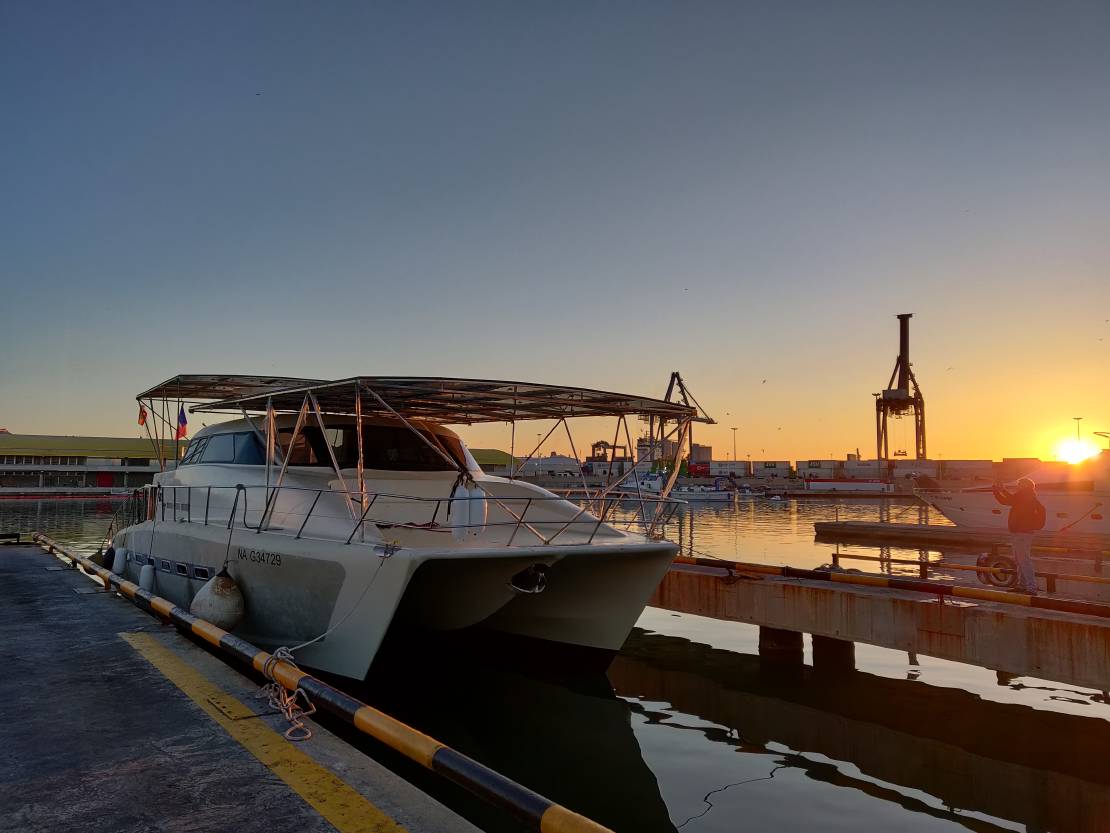
Sea Trial Week
Back when we acquired the wreck of the Jag 530 in November 2020, we hoped to refit it and start sea trials in the summer of 2021. So it is well …
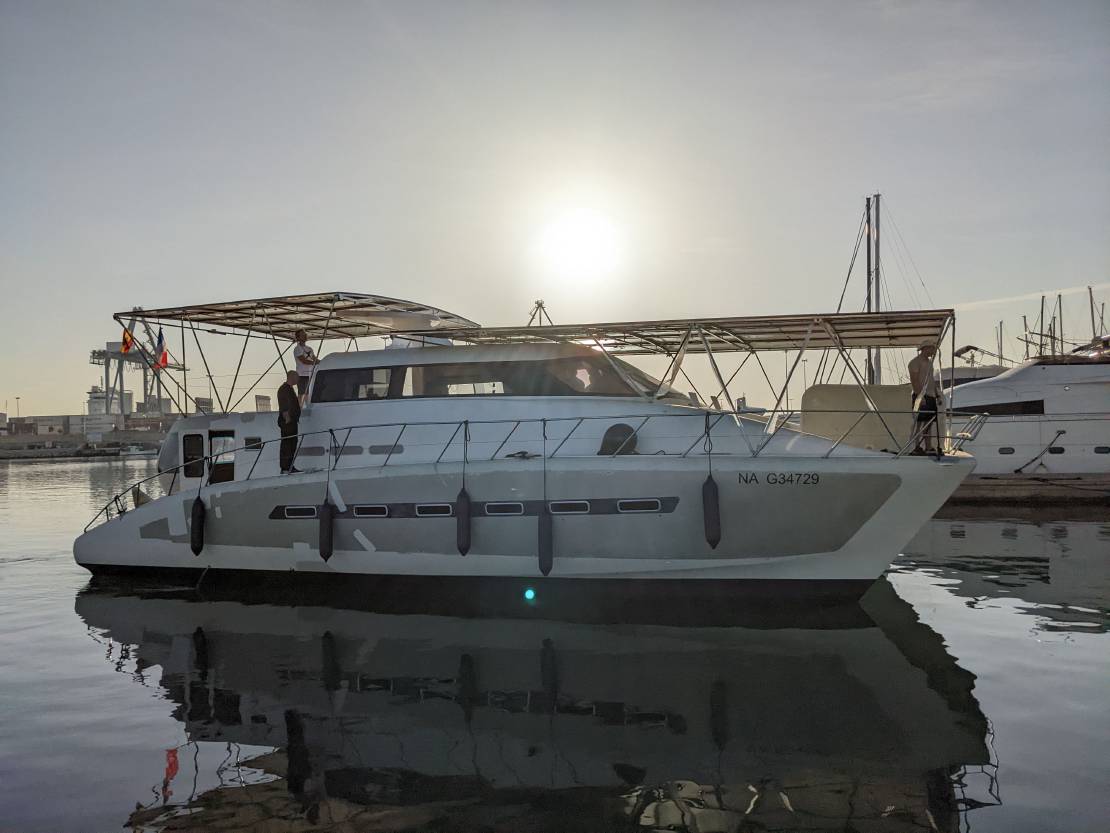
The eagerly awaited date of the launch in the Bay of Alicante is finally here. The goals are to check that the new FIMEA N80L motors are working as expected and to test all the systems, including the new hydraulic steering unit, the solar power generation, the battery management system, etc.
Soon before 7 a.m., Yuri and Germán, from the 360a3 shipyard, are already at work. Once the final finishing touches have been made on board (closing all the through-hulls, installing the DST810 sensor for speed, depth and temperature), the Escargot begins her journey at 7:20 a.m. from the hangar to the launching area. The crane operator from Varadero STA will begin the transfer to the crane at 8:30 a.m. so the journey makes slow progress at about 1 km/h to the rhythm of the beeps under a beautiful purple sky.
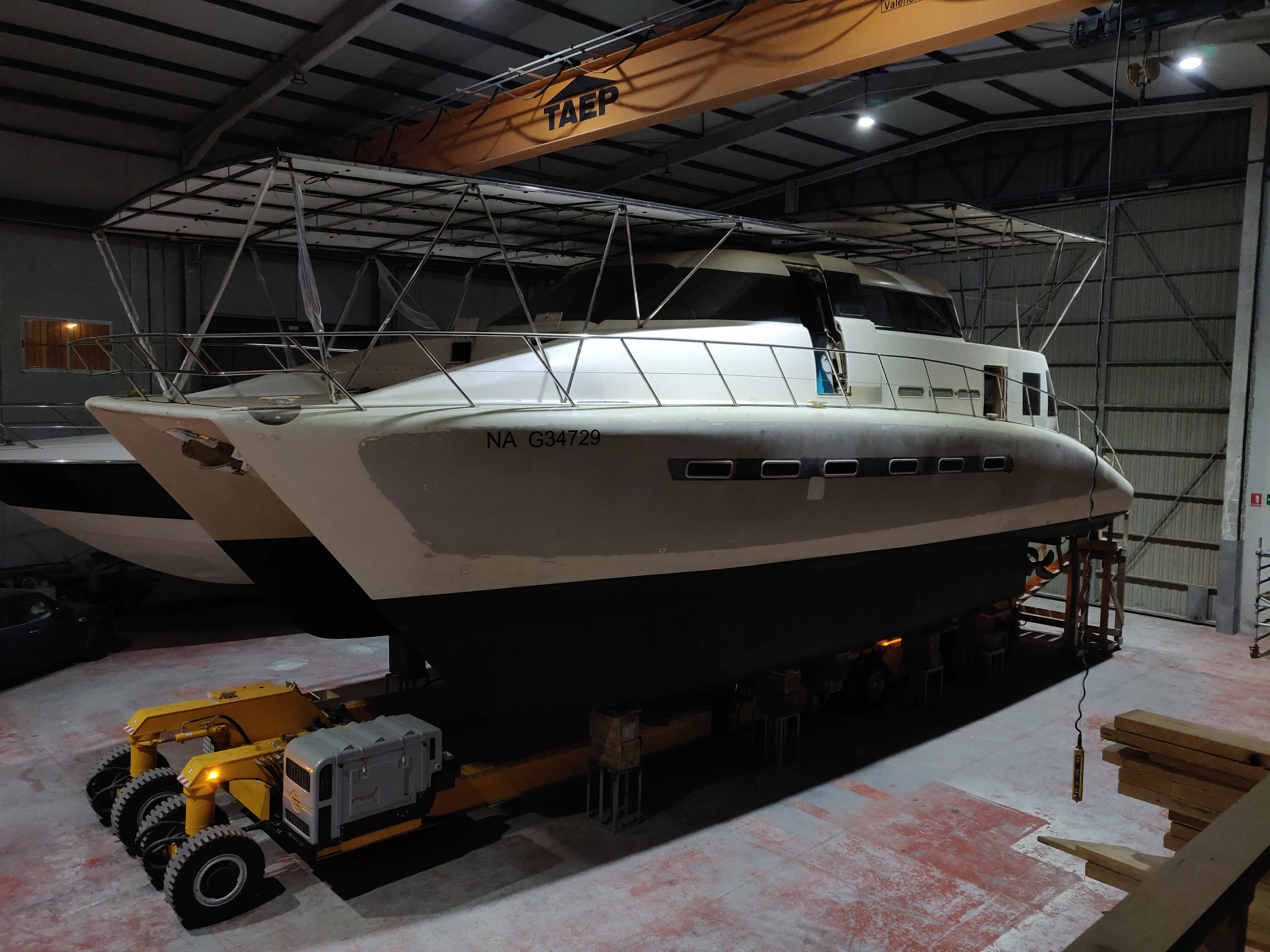
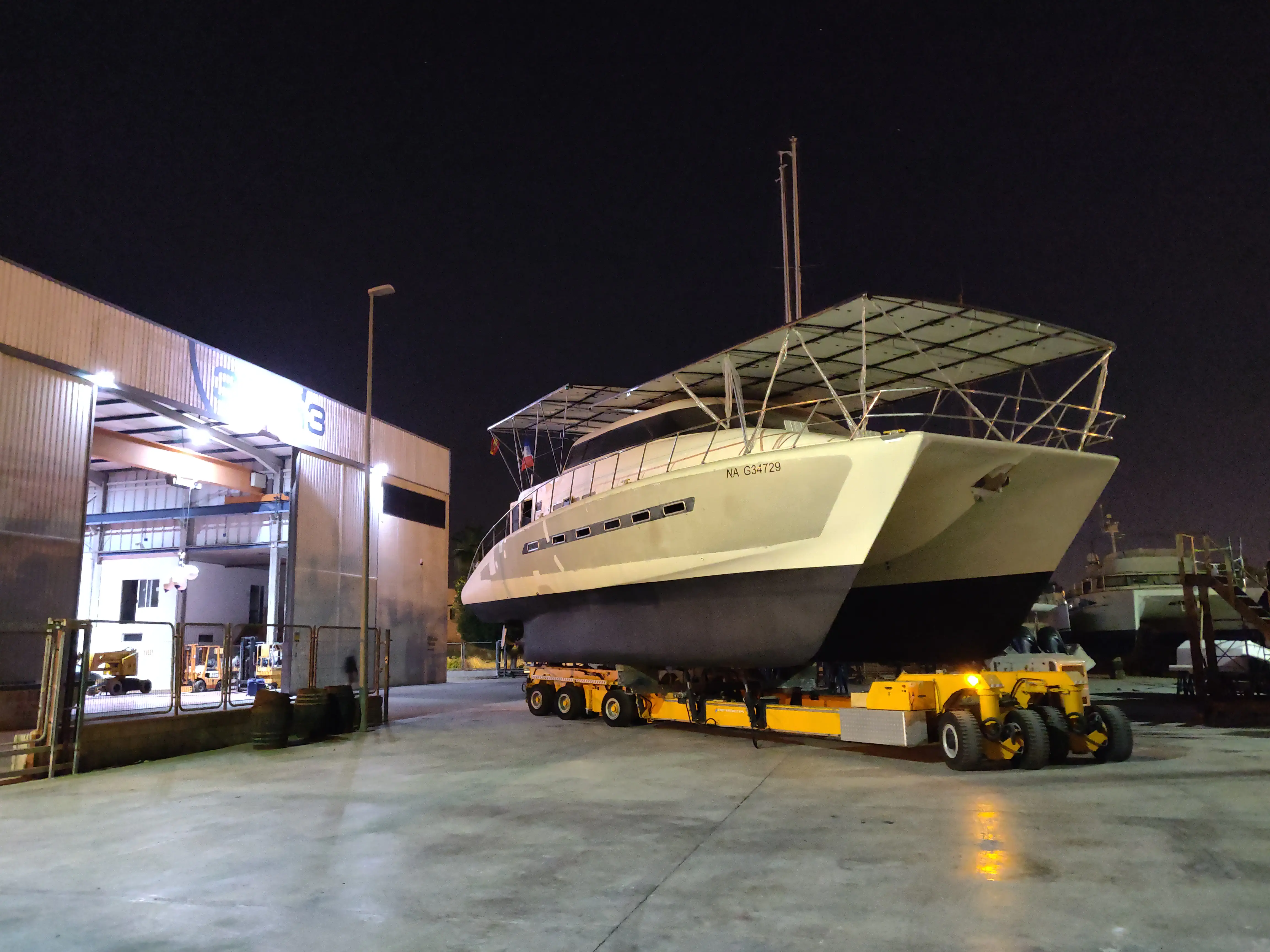
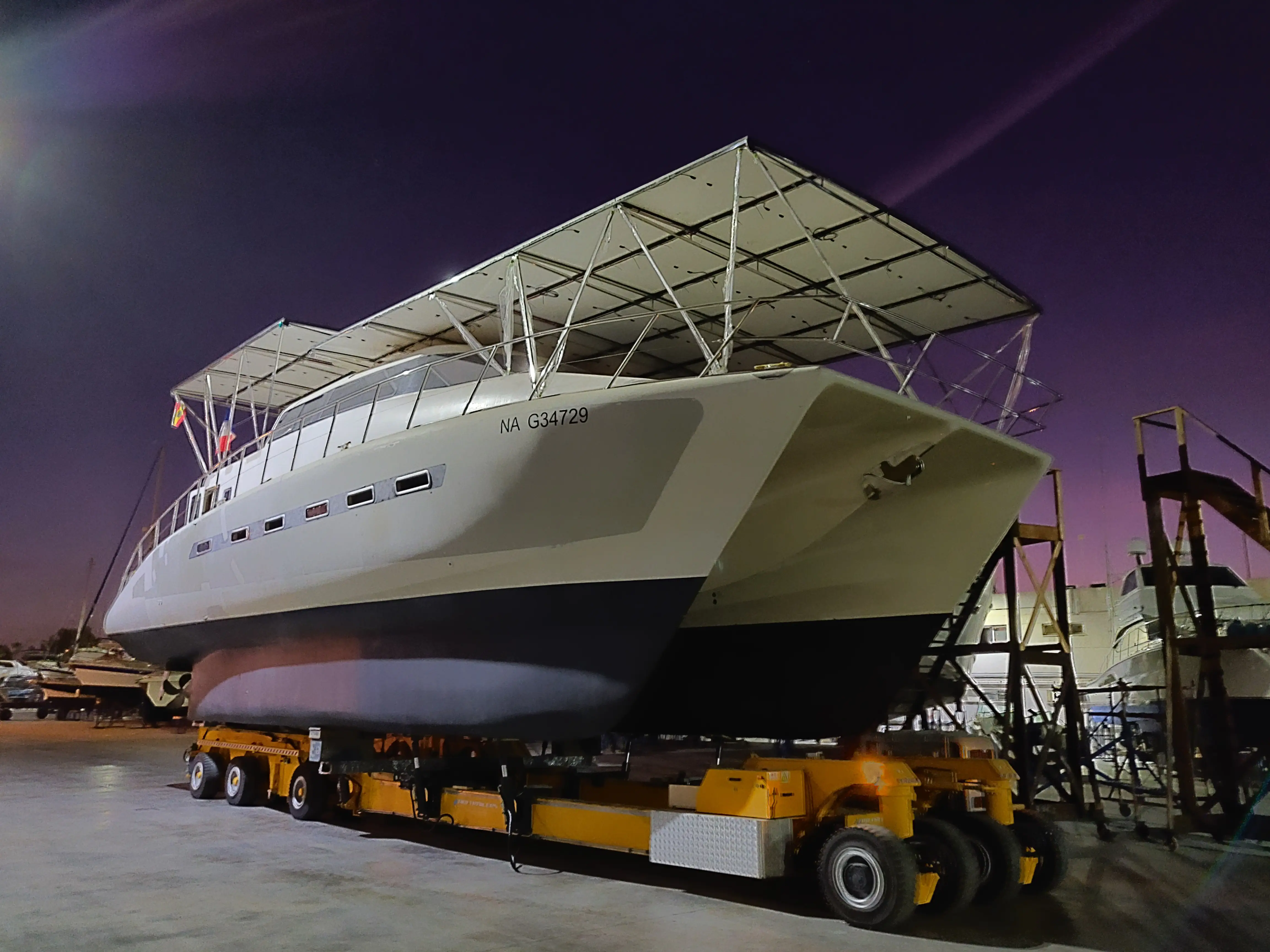
Everything goes perfectly: the transfer of the motorized trailer to the travel lift and the descent into the “pool”.
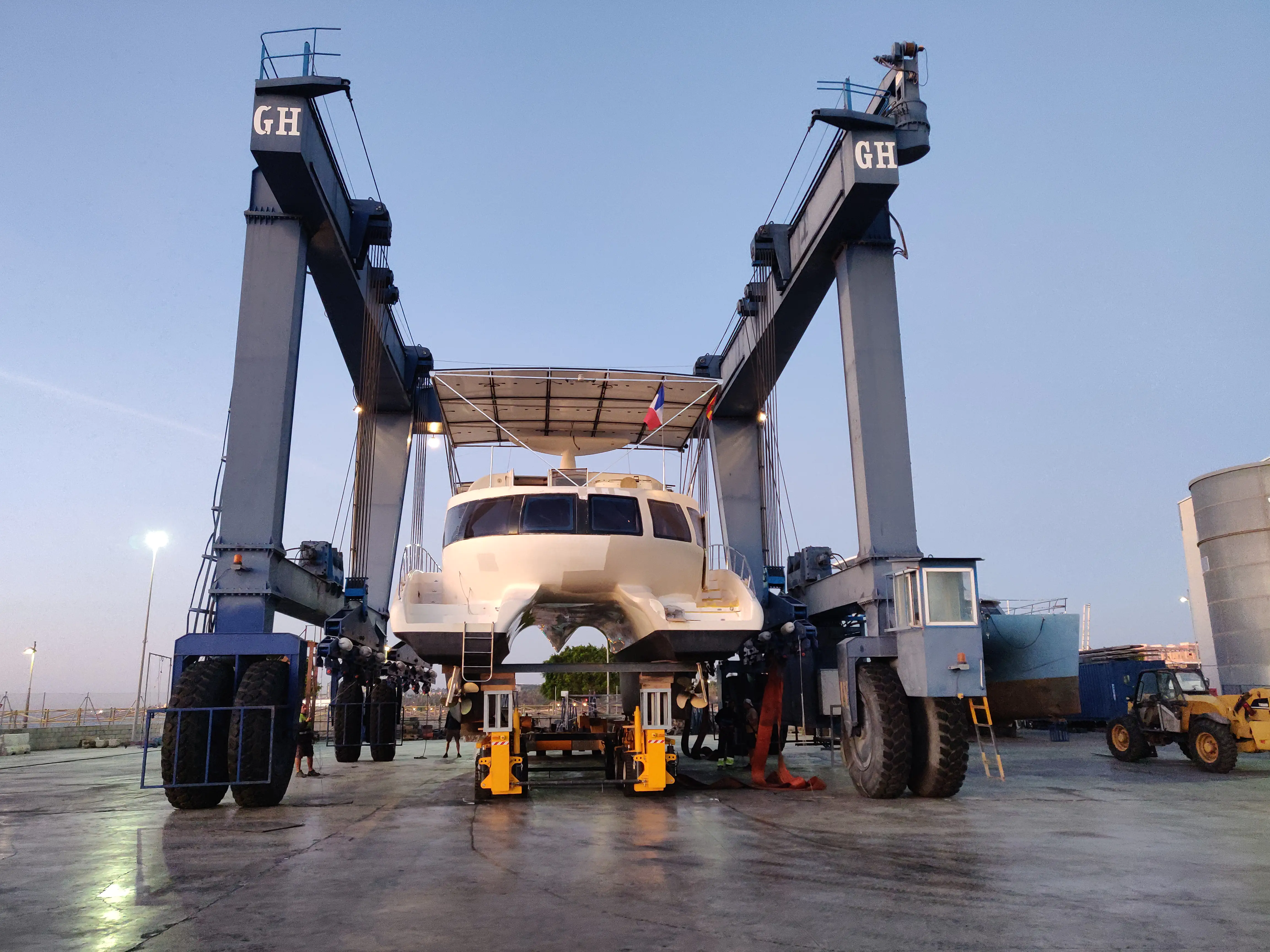
The captains hold the pose for the cameras before launching.



Unlike the identical operation in February, there is no water leak in the holds, so we can start all the systems:
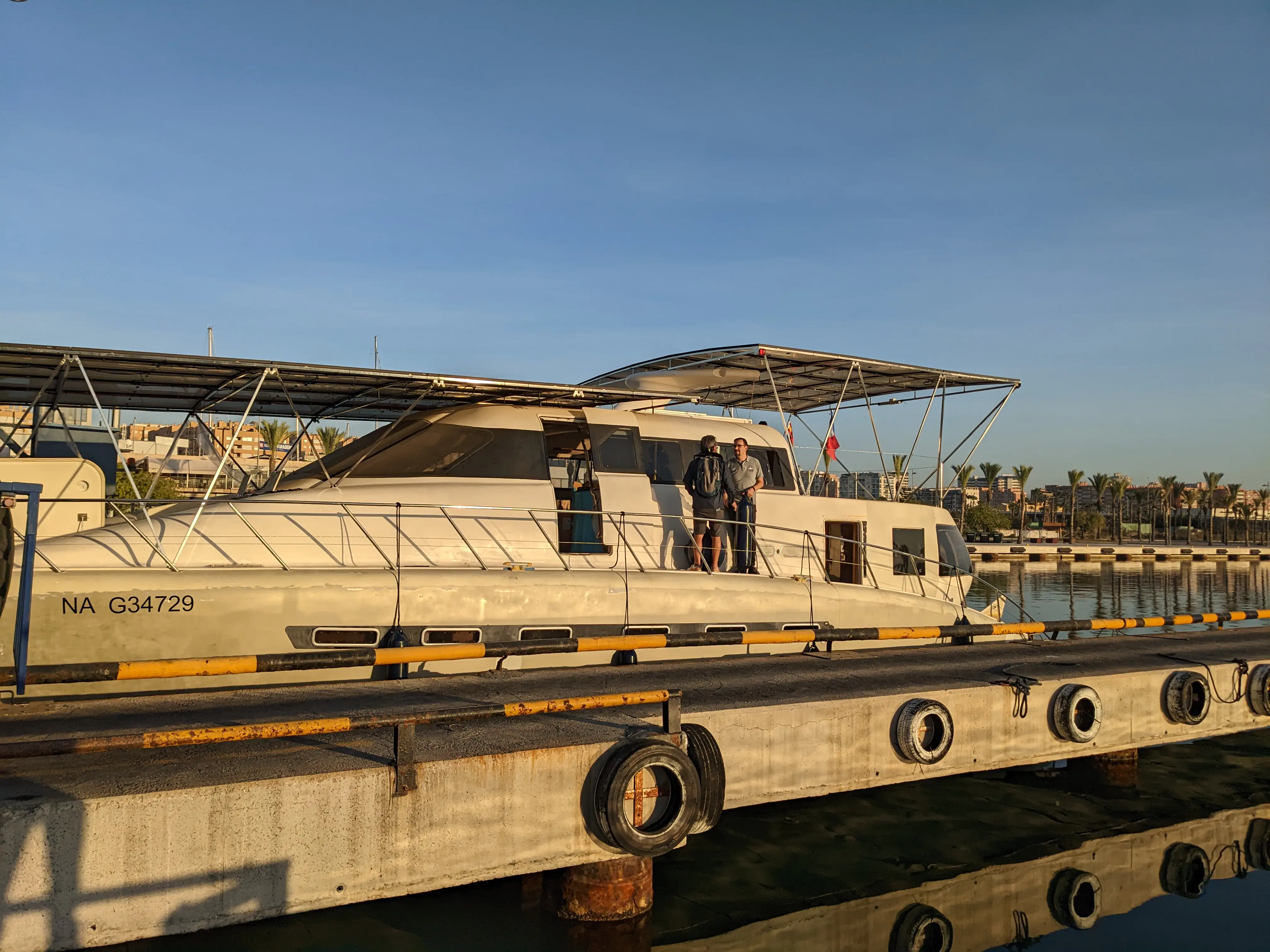
Alex, the captain accompanying us for this sea trial, asks to check the operation of the anchor windlass before departure, which requires starting the 24Vdc circuit dedicated to the winch and the hydraulic pump of the chain locker hatch. We release the anchor a few meters, everything works fine, so we ask the crane operator to set us free.

The first operation is to get out of the crane operator’s “pool” and go and dock at our pontoon place. The maneuver goes well. At one point, the captain, who is discovering the system, feels that the engines no longer respond to the commands. To avoid any risks, we do a restart cycle of the controllers and everything is back to normal, allowing us to dock. A reading of the error log of the motor controllers gives nothing on this incident. It was perhaps just a misperception, because it was the first time that Alex had an electric propulsion system in his hands. To be monitored though…

Once at the dock, everyone gets busy finalizing the preparations, such as checking the alignment of the rudders on the hydraulic system. Unable to have the two rudders perfectly parallel, the hydraulic technician decides that the system will need to be modified in a few days to add a couple of valves to purge the air in the circuits and allow perfect alignment.
We cast off and navigate of about 1 hour in the bay of Alicante. The exit from the port is very smooth, without any noise except for the cooling pumps, because we keep the stern holds open to monitor the systems.
Once we pass the red and green lights, we push a little more on the throttles and reach 4 to 5 knots. We begin the evaluation of the sea trip by taking a few measurement points of electrical consumption at different speeds. At 4 knots, we draw 5 kW. At a little over 8 knots, we draw 73 kW from the batteries. The maximum measured speed is 8.5 knots.
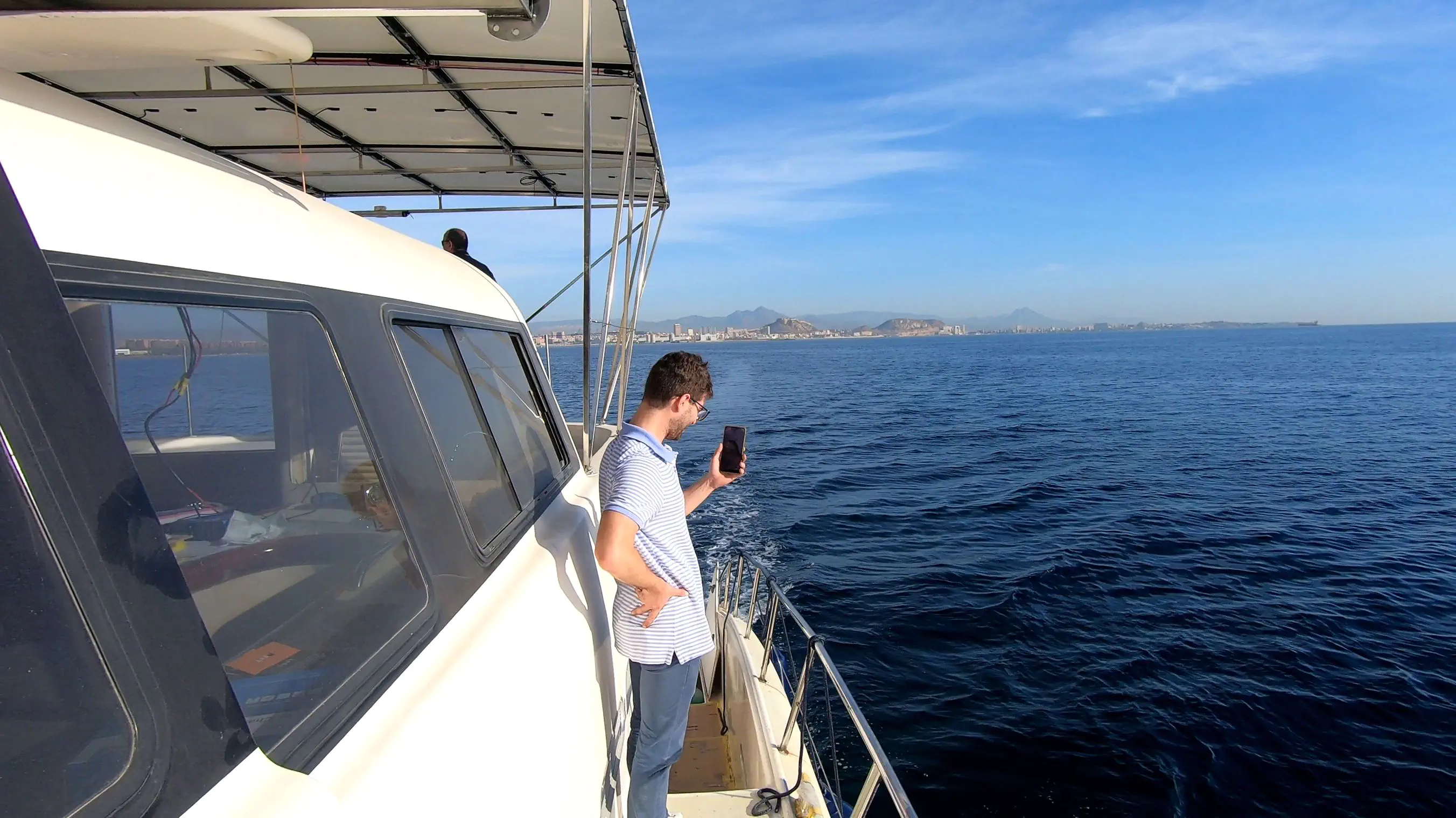
It is then time to start generating electricity with the photovoltaic panels. The panels are covered in dust having spent more than 10 months in the shipyard hangar, so we have fairly low expectations. Once the 40 panels are connected to the 4 MPPT chargers, we generate 5kW. We are delighted to have been able to verify that by keeping the Escargot at 4 knots, the consumption display screen of the battery controller shows 0 kW coming in or going out. Our propulsion is indeed only powered by the sun!
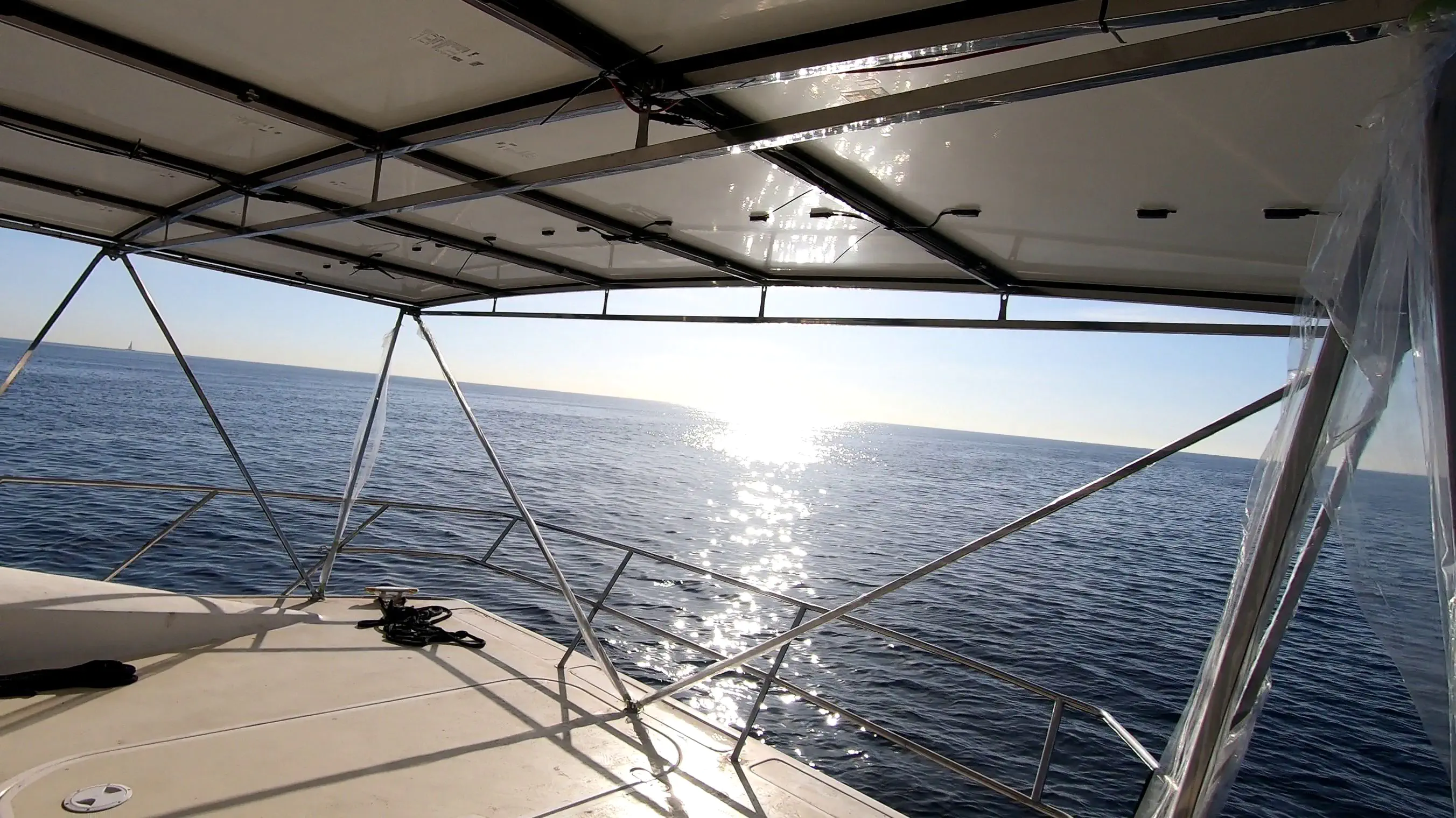
At the stern of the Escargot, we only hear the sound of the water, no thermal engine noise and of course we do not have the engine fumes or the smell of oil bothering us.


We returned to our docking place very satisfied: the new engines provide the expected torque and power to our propellers. Although they are not optimized for the new engines, they provide acceptable propulsion.

Here is the power consumption curve in relation to the speed of the Escargot, in ideal navigation conditions:
And here is the route of our one-hour sea trial in the bay of Alicante:


Back when we acquired the wreck of the Jag 530 in November 2020, we hoped to refit it and start sea trials in the summer of 2021. So it is well …
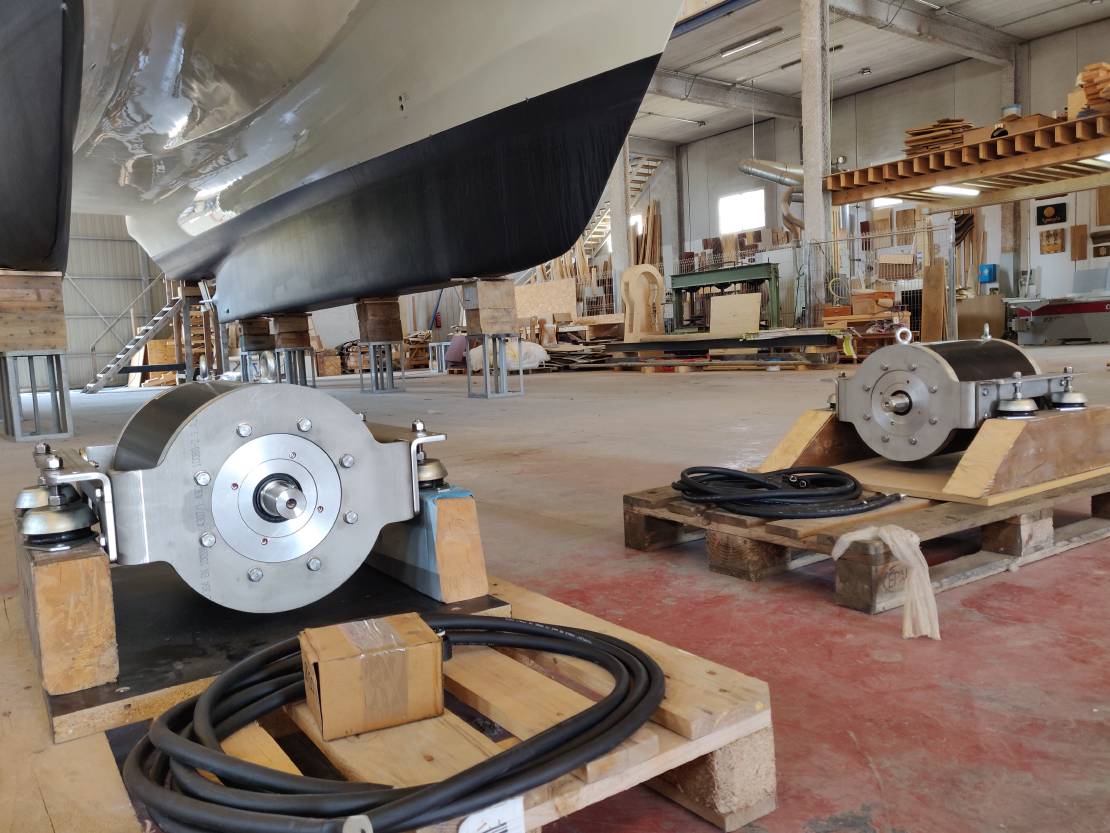
The third quarter of 2022 was a period of significant progress on our vessel's refit. With the arrival of our new FIMEA N80L motors at the end of …